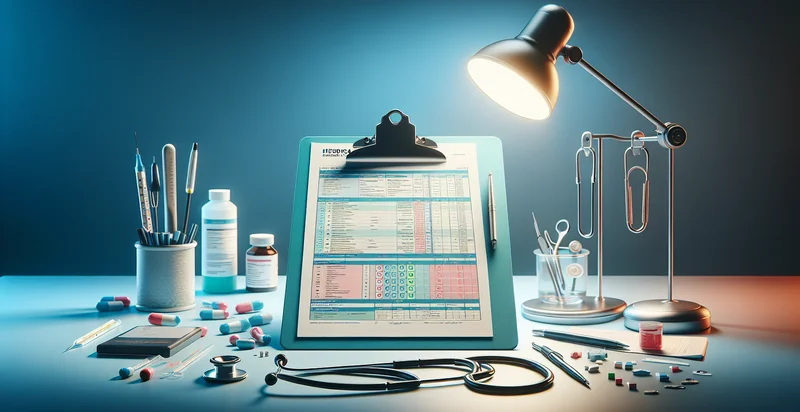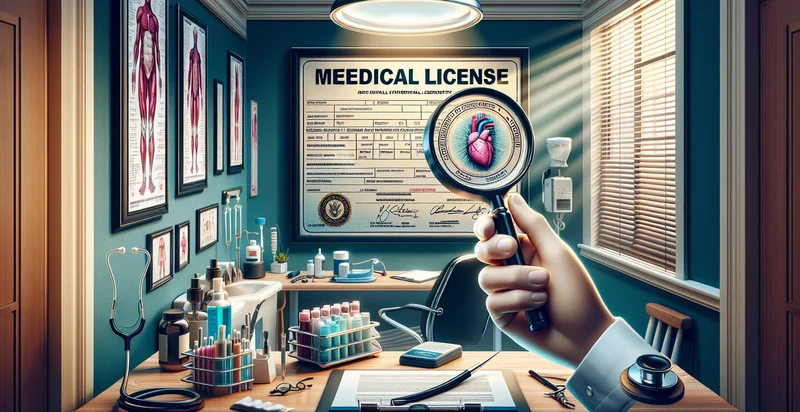Identify medical chart clarity
using AI
Below is a free classifier to identify medical chart clarity. Just upload your image, and our AI will predict the clarity of medical charts based on their content and layout. - in just seconds.

Contact us for API access
Or, use Nyckel to build highly-accurate custom classifiers in just minutes. No PhD required.
Get started
import nyckel
credentials = nyckel.Credentials("YOUR_CLIENT_ID", "YOUR_CLIENT_SECRET")
nyckel.invoke("medical-chart-clarity", "your_image_url", credentials)
fetch('https://www.nyckel.com/v1/functions/medical-chart-clarity/invoke', {
method: 'POST',
headers: {
'Authorization': 'Bearer ' + 'YOUR_BEARER_TOKEN',
'Content-Type': 'application/json',
},
body: JSON.stringify(
{"data": "your_image_url"}
)
})
.then(response => response.json())
.then(data => console.log(data));
curl -X POST \
-H "Content-Type: application/json" \
-H "Authorization: Bearer YOUR_BEARER_TOKEN" \
-d '{"data": "your_image_url"}' \
https://www.nyckel.com/v1/functions/medical-chart-clarity/invoke
How this classifier works
To start, upload your image. Our AI tool will then predict the clarity of medical charts based on their content and layout..
This pretrained image model uses a Nyckel-created dataset and has 12 labels, including Blurred, Clear, Complete, Confusing, Distorted, Faded, Illegible, Incomplete, Legible and Obscured.
We'll also show a confidence score (the higher the number, the more confident the AI model is around the clarity of medical charts based on their content and layout.).
Whether you're just curious or building medical chart clarity detection into your application, we hope our classifier proves helpful.
Related Classifiers
Need to identify medical chart clarity at scale?
Get API or Zapier access to this classifier for free. It's perfect for:
- Clinical Documentation Improvement: This function can identify and flag medical charts that are unclear or lack sufficient detail. By enhancing documentation clarity, healthcare providers can ensure accurate coding and billing, ultimately improving revenue cycle management.
- Quality Assurance in Healthcare: The medical chart clarity identifier can be employed as a tool for quality assurance teams to evaluate the quality of clinical records. By pinpointing unclear or poorly articulated notes, this function helps maintain high standards in patient care documentation.
- Training and Onboarding for Medical Staff: New hires in healthcare facilities can benefit from this function by using it to review and learn from past unclear medical charts. This educational tool can help improve documentation skills among clinicians, leading to better patient outcomes.
- Electronic Health Record Optimization: By integrating the clarity identifier into Electronic Health Record (EHR) systems, healthcare organizations can automatically assess the clarity of charts during data entry. This real-time feedback encourages providers to document more clearly, reducing errors and enhancing patient safety.
- Compliance Audits: Healthcare organizations can utilize the clarity identification function during internal audits to ensure compliance with regulations regarding documentation. Clear medical charts are not only essential for patient care but also crucial for meeting legal and insurance requirements.
- Telemedicine Enhancement: As telemedicine becomes more prevalent, ensuring clarity in remote consultations is vital. The medical chart clarity identifier can assess and suggest improvements for documentation in telehealth visits, promoting effective communication between providers and patients.
- Research and Analytics: Researchers can leverage this function to analyze trends in medical chart clarity across various departments or time frames. Insights gained from this analysis can inform strategies to enhance documentation practices and improve overall healthcare delivery.


